The genesis of a project for battles in the Viking Age stretches all the way back to the 1980’s and a wonderful series on British early medieval battles by Guy Halsall along with a set of rules called ‘Dark Age Infantry Slog’ by Andy Callan. I’d had a few goes at doing something ‘Dark Age’ over the years, but nothing that came close to being able to play the battles of the age. 6mm offered the chance to eventually get some sizeable armies on the table, and I was ultimately going to aim at doing Brunanburh. I thought I’d go through some of the processes and decisions which led to the building of the armies, and later deal with some ideas for scenery and rules.
The Viking shieldwall
Scale:
I eventually settled on 6mm, but I did consider other scales. As early medieval battles were relatively simple affairs involving 2 opposing lines, usually all on foot, they can be wargamed in any scale. Even in 28mm you’re not going to run out of space in terms of table width that you risk when you have armies that deploy in more depth. I’d previously done a Viking army in 15mm using Two Dragons figures, and this is a great range with lots of pose variations that really enable you to make some fantastically characterful shieldwalls. But my initial idea for representing the armies would need a lot of figures, and even in 15mm would make the project very difficult to achieve in terms of painting time.
10mm offered a good compromise on the face of it, but the ranges weren’t as good as the Two Dragons ones. Eventually I did what I always do with 10mm and see them as not having the detail of 15mm and not having the mass effect of 6mm (I know you’re supposed to look at it the other way around). The clincher really was not wanting to get a load of 10mm terrain when I already had trees etc. in 6mm. So 6mm it was.
And the Saxons
Basing:
I really wanted to get a mass effect for the shieldwalls, so that would involve packing a lot of figures onto a base. I hovered between 60mm and 40mm frontage bases before deciding on the latter. I figured I’d want to have more individual bases early on to be more able to play some games. In hindsight, I think 60mm might have been better. But I will do some 80mm ‘double bases’ later on.
How deep to make the bases in terms of ranks was the next question. There really aren’t any detailed descriptions of shieldwall depth, and it probably varied anyway. You might thin your line to match an enemy’s frontage, or deepen it where you expected to break through the enemy line. With single line bases, you could represent these variable depths as usual for most wargames, but I wanted to have a distinctive look for the bases with irregular ranks, so I decided on 5 ranks deep. There’s a reference in one of the sagas to a 5-rank deep shieldwall, though written a century or more after the battle described, so of limited reliability. However, 5 ranks seems a reasonable depth to avoid having your formation broken through, and looks a bit better than 4 as well… This made for a 40mm deep base, with the first 10mm left clear. I tacked a few figures on to the rear of the formation as well, and eventually I’m planning to have some extra bases with stragglers on to add to the rear of the shieldwall bases, to give the effect of the formation thinning out towards the rear.
The two shieldwalls together
Figures:
For figures I went with Baccus. They had a good range of figures, and they were all standing still, rather than being too animated, which would be easy enough to pack together. As is often the case with Early Medieval ranges, Baccus’ is aimed at Hastings, which means you get a lot of kite shields in with the Saxons. I don’t have any interest in the 1066 campaign, so those figures weren’t much use. Consequently, I decided to just use the armoured Viking spears for the front ranks of all the nationalities, and add the unarmoured Saxons, Vikings etc to the rear ranks. I also got a pack of Goths for a bit of variety (they also come with windsock standards) along with some medieval Scots and Welsh for doing those armies for Brunanburh. Given the nature of 6mm and early medieval, it pays to be a little bit clichéd with their appearance to make them stand out.
The figures themselves I clipped off their strips and cut down the bases as small as possible to fit them closer together. This only actually resulted in getting 9 figures on a 40mm front rather than the 8 using the strips as they are, but I still think it’s worth it and it also makes them less regular.
The actual basing is a bit tricky. I based them one rank at a time. So, glue down one rank, glue and sand around the bases, when that’s dry paint the ground in earth colour, then do the next rank and so on. I was a bit paranoid about filling the gaps between the figure bases, and the only way to do that was 1 rank at a time. I made the front lines irregular in places, so while the end figures of each rank were 10mm from the front, I could move some of the rest of the figures forward or backwards to create an irregular frontage, something which I’ll be able to do in a more pronounced way with the 80mm bases.
Once all the bases were finished and painted, the front and rear were given a coating of 2mm static grass applied with an applicator.
Overall, I’m pretty happy with how they came out. Possibly 60mm bases would have been better, but that’s a minor point. Still a long way to go. I’d initially thought about 40 bases per side for Brunanburh, which is 4 times as many bases as are here, so about 2,000 figures per side. And all on a frontage of less than 6 foot.
View of the two shieldwalls showing the variation in frontage



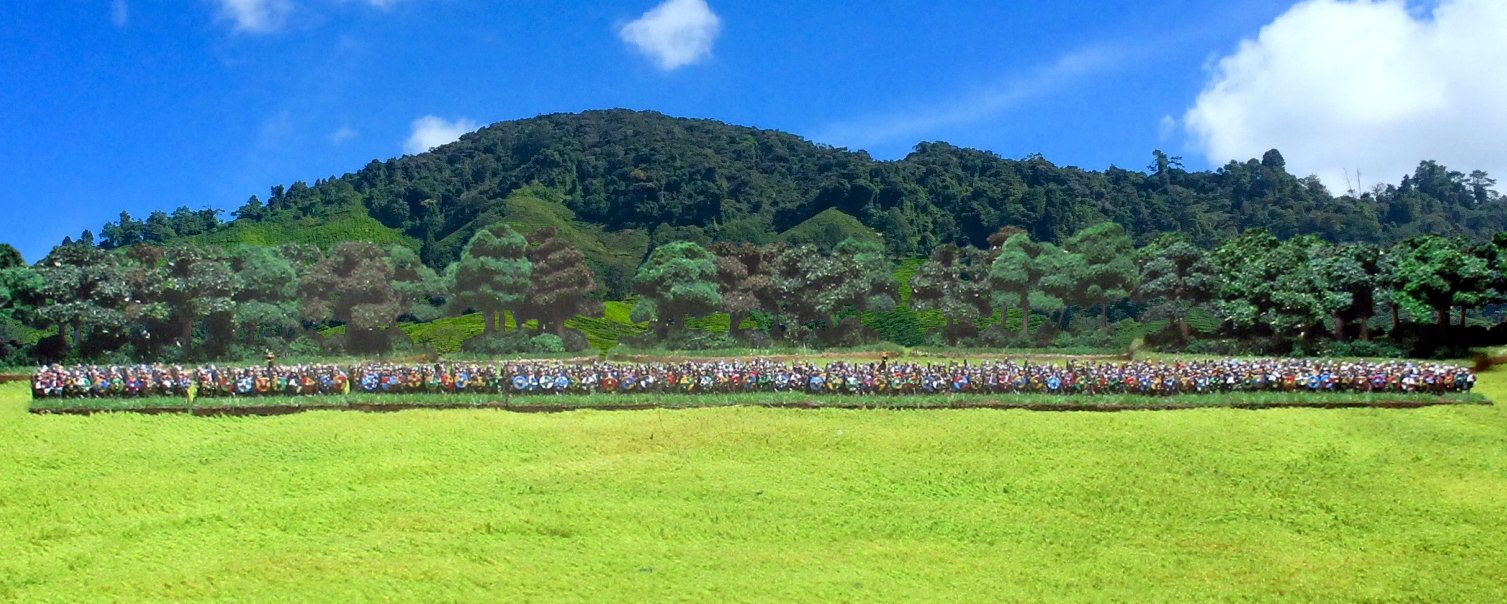
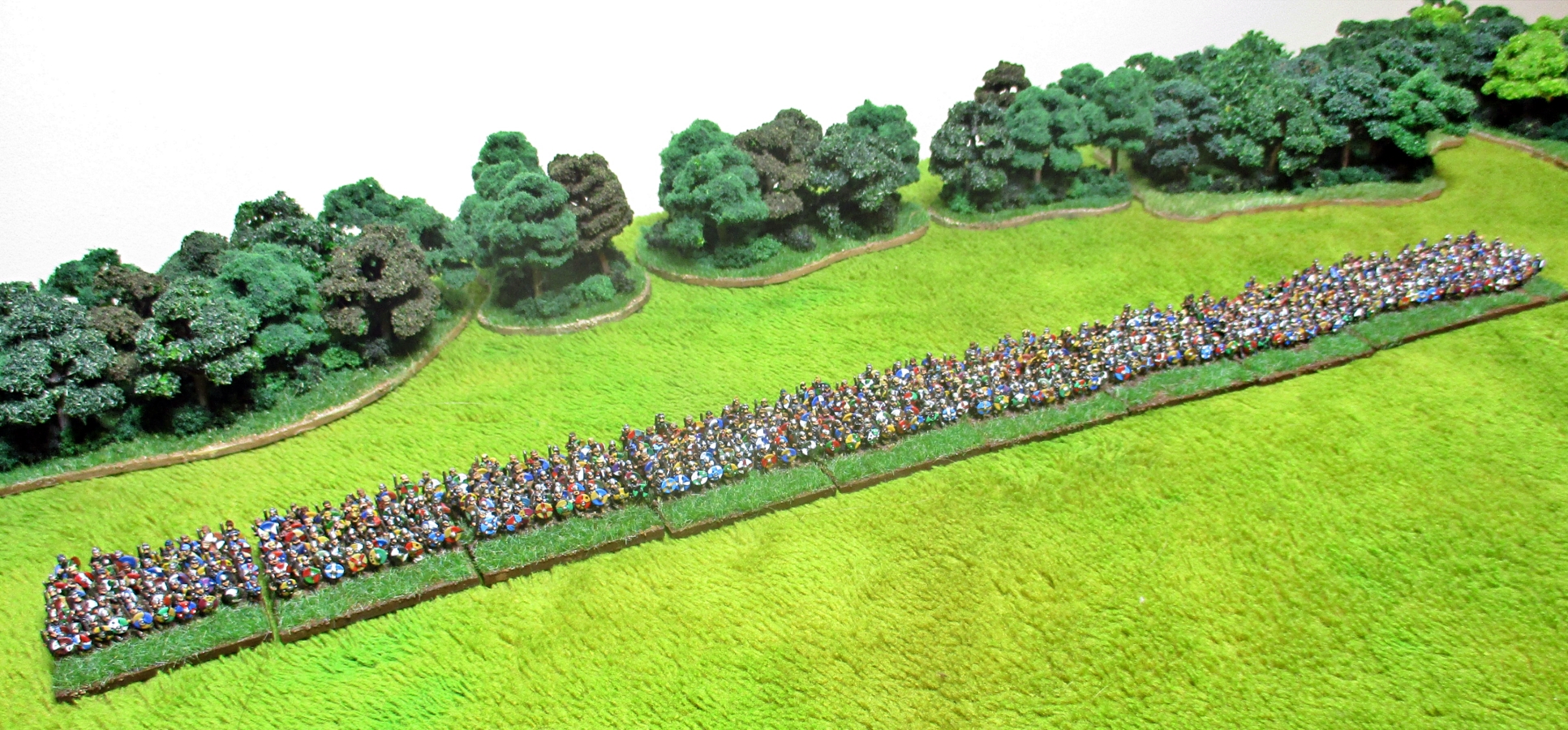
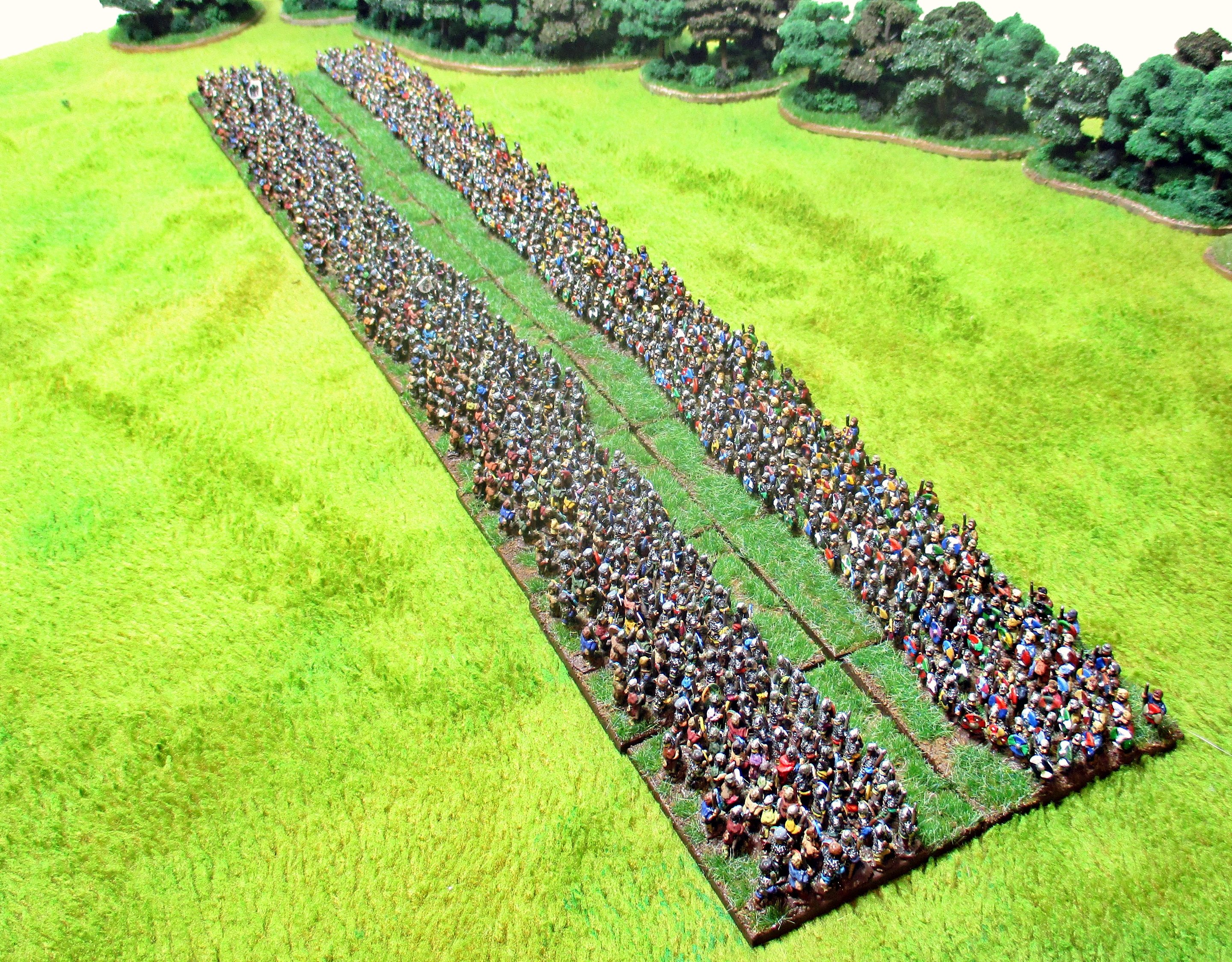
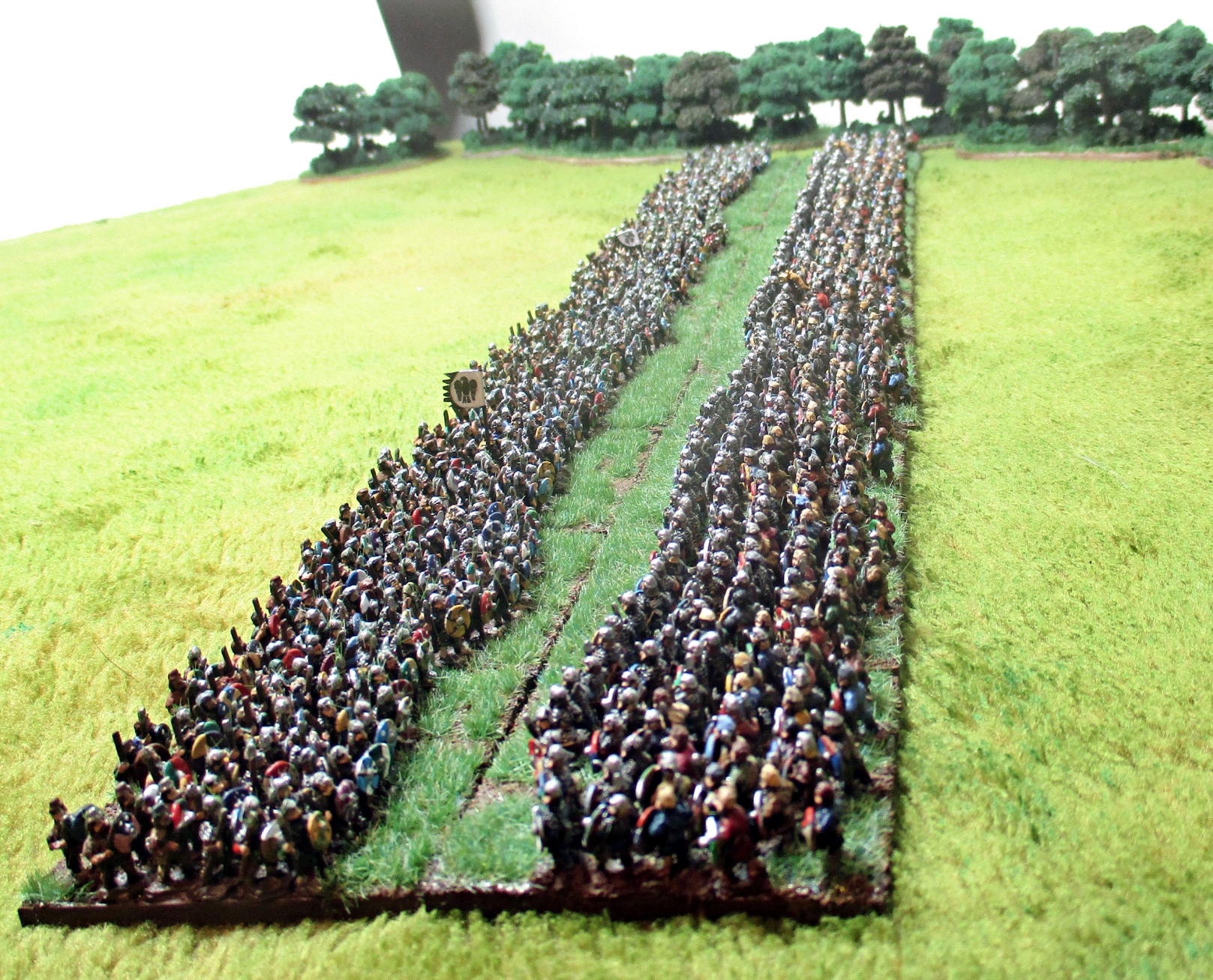
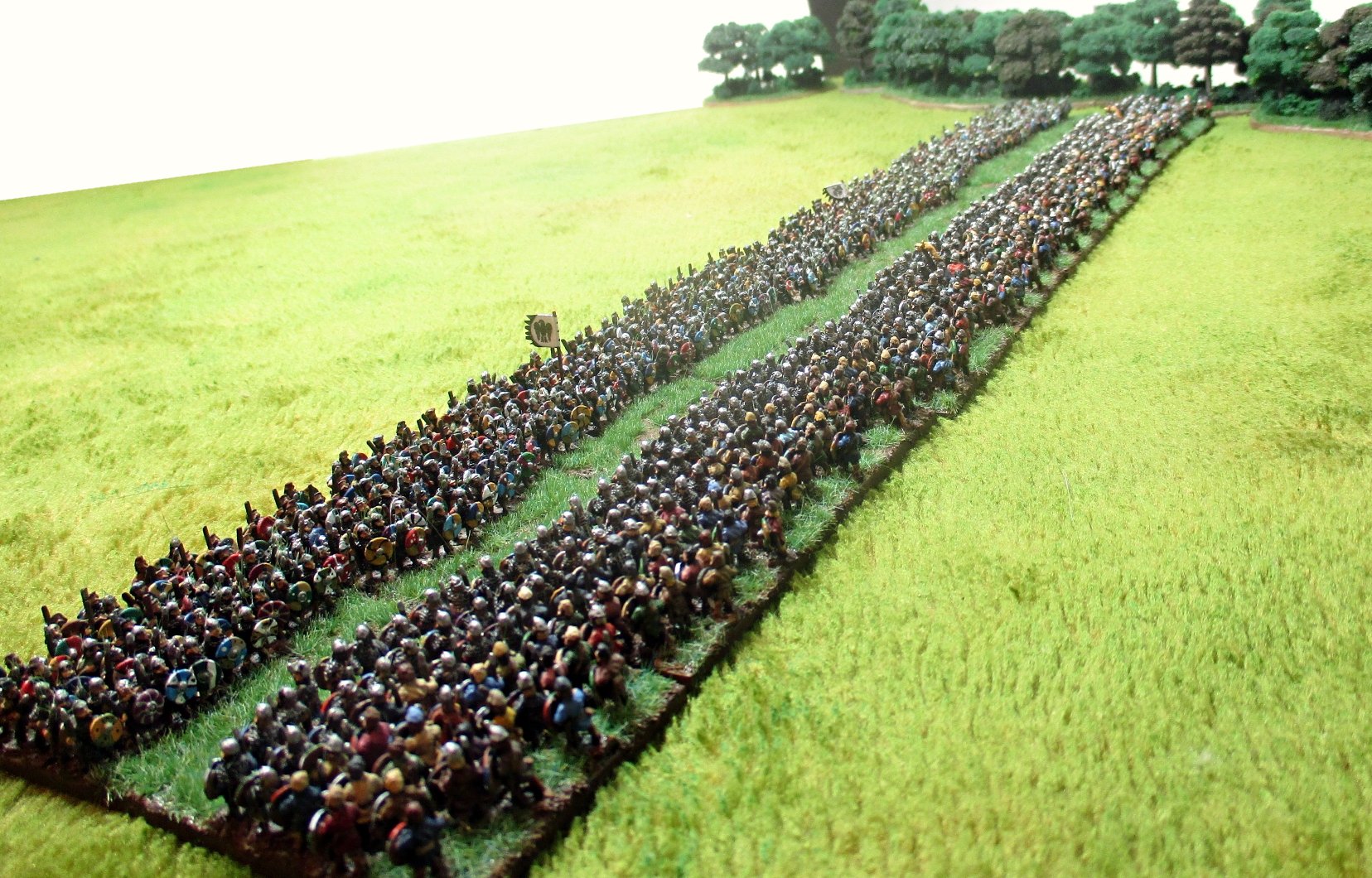
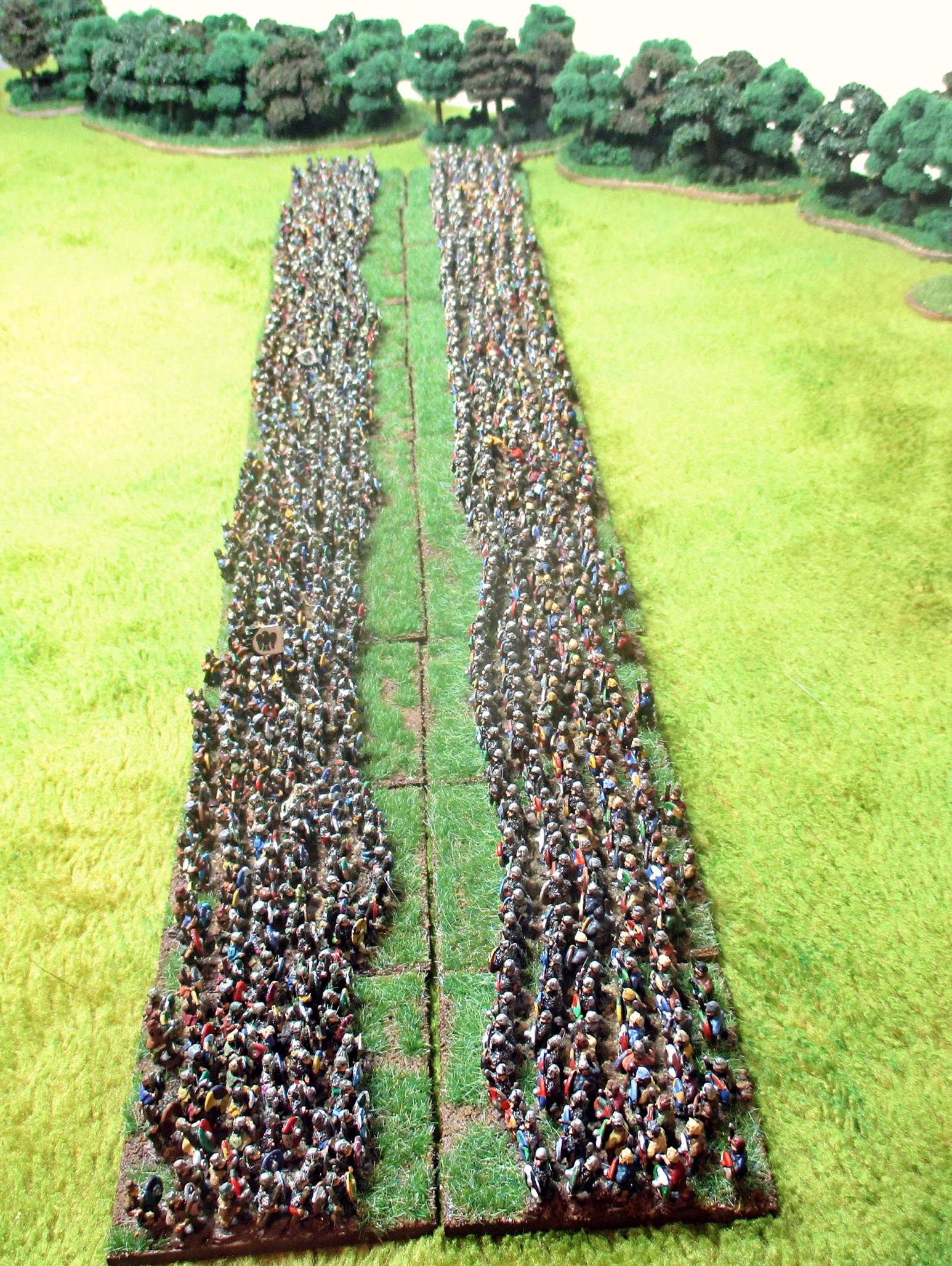
Those shield walls look great- certainly show off the benefits of 6mm.
I’ll have to look again at Baccus’ catalogue.
Cheers,
Pete.
LikeLike